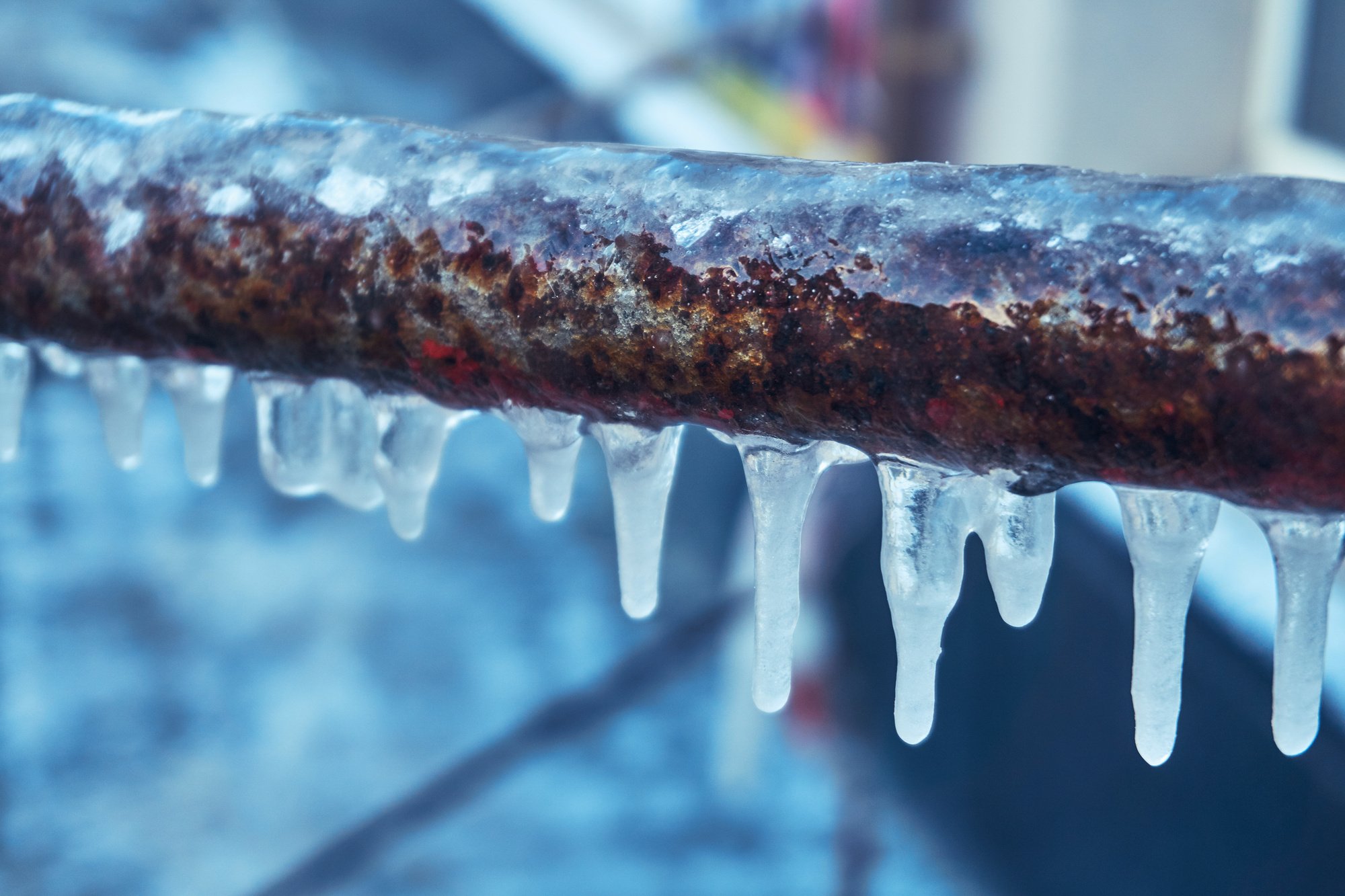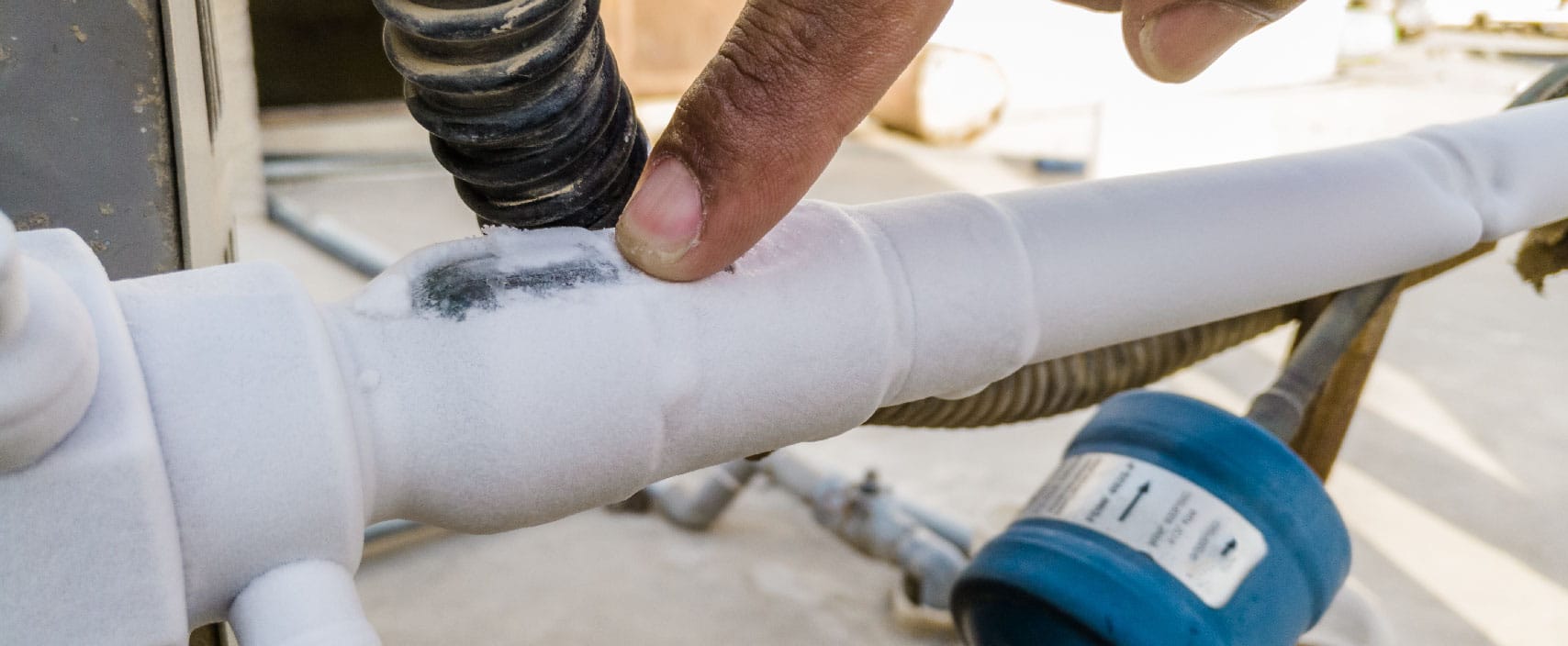Identifying a Frozen AC Pipe - Efficient Solutions for Home Cooling Systems
Identifying a Frozen AC Pipe - Efficient Solutions for Home Cooling Systems
Blog Article
What are your beliefs about Have a Frozen AC Line? Here’s How to Fix It?

Intro
Uncovering that your air conditioner pipeline is iced up can be concerning, especially throughout hot summertime when you rely upon your ac unit one of the most. Comprehending what to do in such a circumstance is essential to stop additional damages to your cooling system and ensure your convenience indoors.
Recognizing the Causes
Several factors can contribute to the cold of an air conditioning pipe. Comprehending these causes can aid you attend to the problem successfully.
Absence of Airflow
One usual source of an icy air conditioner pipe is inadequate air flow. When the air movement over the evaporator coil is limited, it can trigger the coil to go down below freezing temperature, causing ice development on the pipeline.
Reduced Refrigerant Levels
Insufficient cooling agent levels in your a/c system can also lead to a frozen pipeline. Reduced refrigerant levels can trigger the stress in the system to drop, causing the cold of moisture on the evaporator coil.
Winter Conditions
In cooler environments, freezing temperatures outside can contribute to the cold of air conditioner pipelines. If your AC unit is not appropriately shielded or if there are leaks in the ductwork, chilly air can penetrate the system, causing the pipeline to freeze.
Dirty Air Filters
Filthy or clogged up air filters can restrict air flow in your air conditioner system, resulting in different concerns, including an icy pipeline. It's necessary to replace or clean your air filters on a regular basis to make certain correct airflow and avoid ice buildup.
Indications of a Frozen A/c Pipe
Acknowledging the indications of an icy air conditioning pipe is essential for timely action.
Reduced Airflow
If you notice a significant reduction in airflow from your vents, it can show an icy pipe.
Ice Buildup on the Pipe
Visible ice accumulation on the refrigerant line or the evaporator coil is a clear sign of an icy AC pipeline.
Odd Sounds from the Unit
Unusual audios, such as hissing or gurgling, originating from your air conditioning system can indicate that there's ice existing on the pipeline.
Immediate Actions to Take
When faced with an icy AC pipeline, it's essential to act promptly to avoid more damage to your air conditioning system.
Shutting off the air conditioning
The primary step is to switch off your air conditioning unit to prevent the system from running and intensifying the issue.
Checking for Blockages
Check the area around the interior device for any type of blockages that might be blocking air flow, such as furnishings or drapes.
Defrosting the Pipe
You can make use of gentle methods like positioning towels taken in cozy water around the frozen pipe to assist thaw it slowly.
Safety nets
Taking safety nets can help stay clear of future events of an icy air conditioning pipe.
Normal Maintenance Checks
Set up regular upkeep consult a specialist HVAC service technician to ensure that your a/c system is running efficiently.
Altering Air Filters
Regularly change or cleanse your air filters to stop air flow limitations and maintain ideal performance.
Shielding Exposed Pipes
If your AC pipes are subjected to chilly temperatures, think about shielding them to avoid cold throughout winter season.
Looking For Professional Help
If DIY approaches fall short to deal with the concern or if you're unsure concerning exactly how to proceed, it's ideal to seek help from a qualified HVAC service technician.
When DIY Methods Fail
If your attempts to thaw the pipeline or address other problems are unsuccessful, it's time to call a specialist.
Importance of Hiring a Professional HVAC Technician
A licensed HVAC technician has the know-how and devices required to identify and repair problems with your air conditioner system securely and efficiently.
Verdict
Managing a frozen AC pipeline can be an aggravating experience, yet recognizing just how to respond can assist lessen damages and restore convenience to your home. By understanding the reasons, acknowledging the indicators, and taking punctual action, you can successfully resolve the issue and prevent future occurrences.
What to Do If Your AC Line Is Frozen
Make Sure All Supply and Return Air Vents Are Open
If you notice problems with airflow, the first thing you should do is check your supply and return vents. Supply vents distribute clean, conditioned air throughout your home. As this air becomes stale, it’s pulled into the return vent, where it’s reconditioned before being sent back out through the supply vent.
When these vents are closed, air won’t flow in the home. Before examining your AC, check the vents in every room and ensure they’re all open.
Check for a Dirty Air Filter
Another possible cause of limited airflow is a dirty air filter. Your air conditioner’s filters catch elements you don’t want to breathe in, such as dirt and dust. Over time, filters can become clogged, ultimately blocking air from flowing in and out. The lack of airflow can then cause the entire coil to freeze and will completely restrict any air from moving through it. The AC may need to be powered off for one to two days to allow the coil to thaw after replacing the filter to allow proper functioning of the unit. This debris can also accumulate on your AC’s evaporator coil, requiring a more serious repair. In general, air filters should be cleaned regularly (about every two weeks).
Assess Your Outdoor Unit
In addition to checking your AC, assessing the outdoor unit is a good idea. Also known as the condensing unit, it works with your interior unit to release heat outside. An issue with the outdoor unit can result in rising internal temperatures.
Overgrown Shrubs or Clogged Leaves
From leaves and twigs to shrubs and debris, there’s no shortage of outdoor elements that can accumulate around your condensing unit. When these elements get lodged inside the unit, they can block airflow. Fortunately, removing the blockage can solve the problem.
Sounds of a Broken Fan
Shrubs and leaves aren’t the only things that can impede your outdoor unit’s airflow. If the fan is broken, the unit won’t be able to properly get rid of heat — which means the internal temperature won’t go down. First, make sure the fan is spinning. If it is, check for the following sounds of a broken fan:
Buzzing Rattling Screeching Hissing Clicking Preventative Measures
Nobody wants to deal with a frozen AC line. In addition to causing problems with your air conditioner, they require professional repairs. On the bright side, there are preventative measures you can take to help ensure this issue doesn’t arise in the first place.
https://www.coopergreenteam.com/blog/what-to-do-if-ac-line-frozen

I'm certainly very fascinated with Have a Frozen AC Line? Here’s How to Fix It and I hope you liked the new blog posting. For those who appreciated our page plz do not forget to pass it around. I appreciate reading our article about Air Conditioner Frozen? How To Fix your Frozen AC Line.
Request An Appointment Report this page